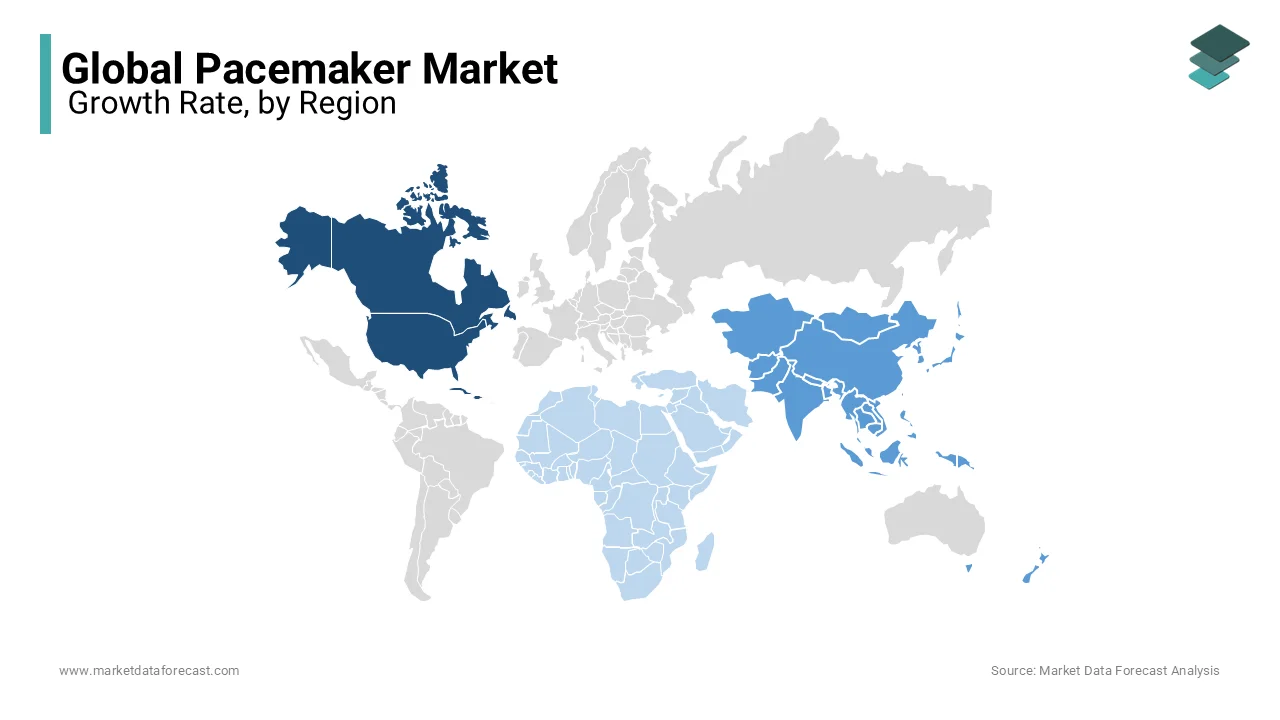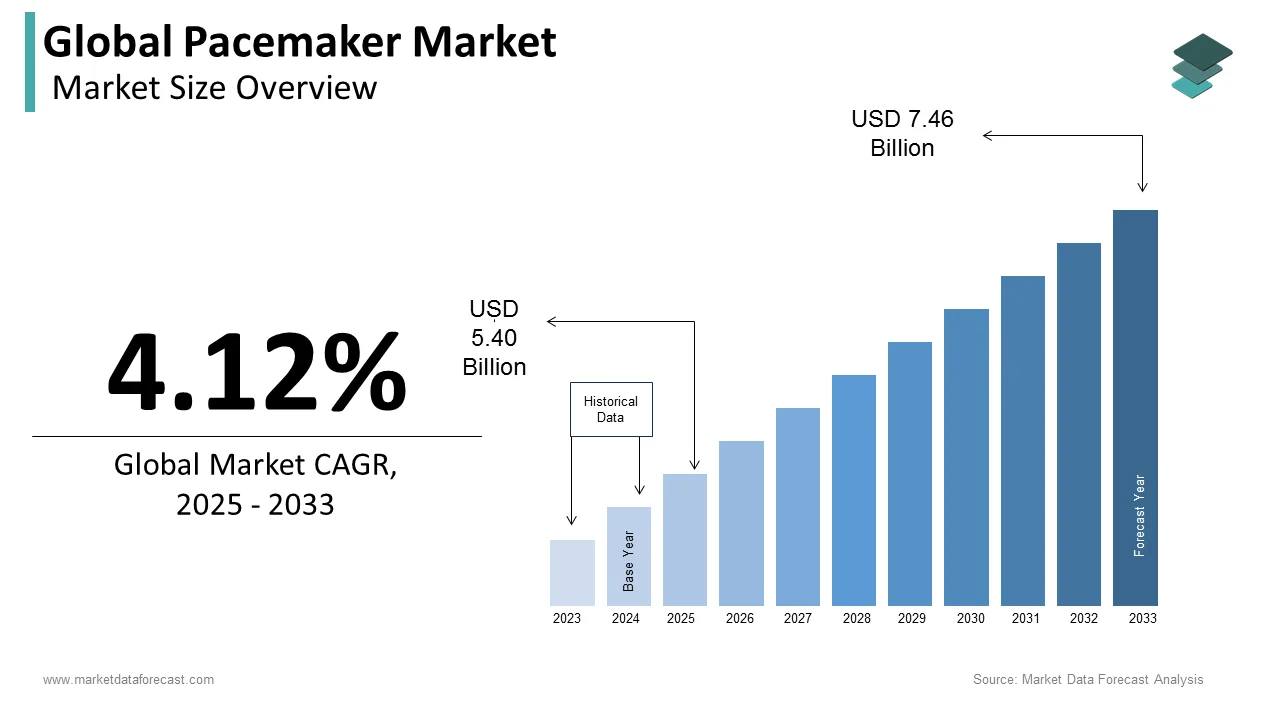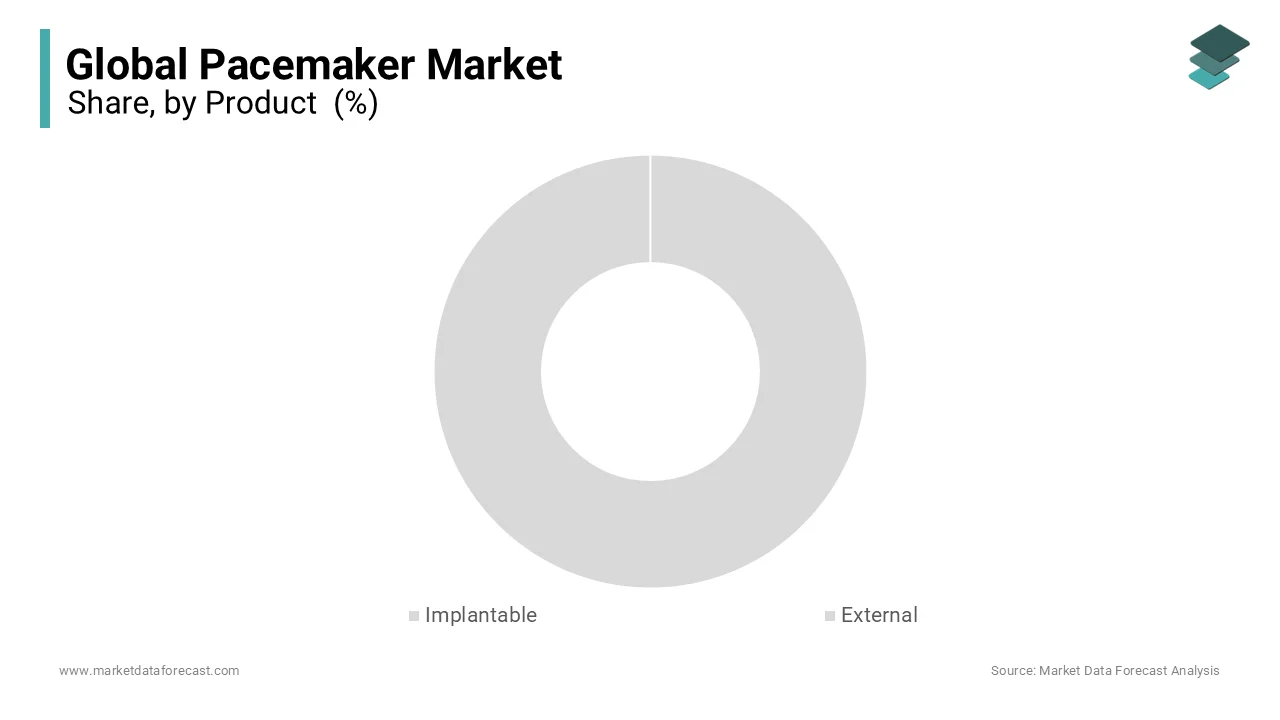Global Pacemaker Market Size, Share, Trends & Growth Analysis Report By Product (Implantable and External), Application (Unipolar Pacemakers and Bipolar Pacemakers) and Region (North America, Europe, Asia-Pacific, Latin America, Middle East and Africa), Industry Analysis From 2025 To 2033.
Global Pacemaker Market Size
The size of the global pacemaker market was worth USD 5.19 billion in 2024. The global market is anticipated to grow at a CAGR of 4.12% from 2025 to 2033 and be worth USD 7.46 billion by 2033 from USD 5.40 billion in 2025.
MARKET DRIVERS
The growing incidence of CVDs, rising costs of cardiac disease management, favorable government regulations, and the introduction of technologically upgraded pacemakers, such as leadless and MRI-safe pacemakers, are propelling the global pacemaker market growth.
One of the significant drivers of market expansion is the increased prevalence of CVDs. According to the American Heart Association (AHA), an estimated 523.2 million people suffered from cardiovascular diseases in 2019. According to the Institute for Health Metrics and Evaluation (IHME), deaths from CVDs have increased from 12.1 million in 1990 to 18.6 million in 2019. The growing demand to enhance patient outcomes for various pacemaker implantations through improved and minimally invasive techniques favors the pacemaker market growth. In addition, favorable reimbursement policies such as the Medicare system in the United States and the NHS in the United Kingdom and due to that, manufacturers of pacemakers such as Boston Scientific Corporation and Medtronic now deliver innovative products covered by payment plans and help patients, which is resulting in the growth of the pacemaker market.
Technology advancements in implantable pacemakers, such as the development of leadless pacemakers, MRI-compatible devices, and cardiac pacing systems with wireless communication and remote monitoring, are likely to boost the adoption rate of pacemakers further. Patients can use MRI-conditional models to supplement MR imaging treatments without harming or modifying the device settings. There have been several improvements in pacemaker technology in the past few decades. Wireless remote monitoring systems that track device data and patient health, longer battery life, and technology that helps reduce pacing requirements to save battery power are among the most impactful technologies in patient care, which is expected to promote the use of modern technology, which is projected to boost the growth rate during the forecast period.
MARKET RESTRAINTS
Over the forecast period, the growth of the global pacemaker market is likely to be restrained by the public's low awareness of cardiovascular disorders in developing and underdeveloped countries, high costs associated with the treatment, and increasing product recalls owing to device malfunction. In addition, post-surgery complications associated with pacemaker surgery, such as infection near the heart where the device is put, further inhibit the market’s growth rate.
REPORT COVERAGE
|
REPORT METRIC |
DETAILS |
|
Market Size Available |
2024 to 2033 |
|
Base Year |
2024 |
|
Forecast Period |
2025 to 2033 |
|
Segments Covered |
By Product, Application, and Region |
|
Various Analyses Covered |
Global, Regional & Country Level Analysis, Segment-Level Analysis, Drivers, Restraints, Opportunities, Challenges; PESTLE Analysis; Porter’s Five Forces Analysis, Competitive Landscape, Analyst Overview of Investment Opportunities |
|
Regions Covered |
North America, Europe, Asia Pacific, Latin America, the Middle East, and Africa |
|
Market Leaders Profiled |
Medtronic, Sorin Group, Biotronik GmbH & Co. KG., Boston Scientific Corporation |
SEGMENTAL ANALYSIS
By Product Insights
Based on the product, the implantable segment had the largest share of the global pacemaker market in 2024. It is expected to grow at a healthy rate during the forecast period. Single-chamber, dual-chamber, and biventricular pacemakers are the three main implantable pacemakers. Reduced post-surgical problems and several leads to ensure proper heart physiology have contributed to the segment's rise. Due to numerous leads, biventricular pacemakers are predicted to gain popularity.
REGIONAL ANALYSIS
The North American pacemaker market occupied the leading share of the global market in 2024 and is anticipated to play a vital role in the global market during the forecast period. The presence of key market participants, growing incidence of cardiovascular diseases among the aging population, rapid adoption of technological advancements such as MRI-compatible and Bluetooth-enabled pacemakers, and improved regulatory clearances are majorly fuelling the pacemaker market in the North American region. In addition, cardiovascular diseases such as congestive heart failure, arrhythmias, and cardiac arrests are rising in the region, fuelling market growth. In terms of share, North America emerged as the most important regional market. Furthermore, the rising population suffering from obesity and favorable reimbursement policies propel regional market growth. The U.S. pacemaker market is expected to hold the leading portion of the North American market in the coming years. In the U.S., the lifetime risk of atrial fibrillation is estimated to be one in every three people. Alcohol, tobacco, a sedentary lifestyle, and over-the-counter drugs can also exacerbate arrhythmias. The pacemaker market in the United States is further driven by innovative devices such as leadless and MRI-safe pacemakers. Furthermore, increased per capita disposable income and rising healthcare spending are expected to drive market expansion in the United States during the forecast period.

Over the forecast period, the Asia Pacific pacemaker market is expected to grow healthy. The growing penetration of the key market participants and the availability of untapped market potential primarily drives the pacemaker market in the Asia-Pacific region. In addition, growing investments to upgrade APAC’s healthcare industry in gaining pace, particularly in Japan, India, and China. Furthermore, countries are increasingly focusing on creating effective cardiac diagnosis and treatment facilities. As a result of these factors, the region's market is predicted to see a healthy CAGR in the upcoming years. Furthermore, due to the increasing aging population and the growing number of people suffering from cardiovascular disorders such as atrial fibrillation, and arrhythmias, the need for pacemakers is anticipated to increase considerably in the APAC region in the coming years.
The Chinese pacemaker market is anticipated to showcase a healthy CAGR during the forecast period. Rapid socioeconomic development has impacted cardiovascular health among the Chinese population, with risk factors such as obesity, hypertension, smoking, and diabetes rising. As a result of the shift in lifestyle, urbanization, and an aging population, the risk of cardiovascular disease has increased dramatically in China. The rising prevalence of cardiovascular diseases has become a severe public health concern, with higher fatality rates boosting the adoption rate of pacemakers.
The European pacemaker market held a considerable share of the global market in 2024 and is expected to register promising growth during the forecast period.
The pacemaker market in Latin America is expected to grow at a healthy CAGR during the forecast period owing to the growing usage of the increasing aging population suffering from CVDs.
The MEA pacemaker market is expected to project a moderate CAGR in the global market over the forecast period.
KEY MARKET PLAYERS
Companies playing a prominent role in the global OCTG market include Medtronic, Sorin Group, Biotronik GmbH & Co. KG., Boston Scientific Corporation, Vitatron, St. Jude Medical, Inc., and Zoll Medical Corporation, and Others.
RECENT HAPPENINGS IN MARKET
- In December 2020, Medtronic received Canadian Health License for a Micra AV pacemaker with atrioventricular synchrony. Micro AV is the new version of the original platform.
- In July 2020, Abbott’s Bluetooth-connected pacemaker won FDA approval. The Bluetooth device relates to a personal smartphone and monitors patients suffering from dangerous heart arrhythmias.
- In December 2020, Microport Cardio Rhythm Management (CRM) announced as the company made its first inaugural in the Astral-4LV to estimate the safety and efficacy of Axone. The device is used in patients who need CRT pacemaker implantation (CRT-P) due to heart failure.
- In October 2020, Azure pacemaker with Blue Sync technology was launched by Medtronic. This device is India’s first pacemaker. This pacemaker is in direct contact with the patient’s smartphones and tablets.
- In September 2017, China FDA approved the Rega pacemakers, developed by LivaNova Plc and Microport Scientific. These devices feature advanced functions with the dual sensor's help, responsive to exercise and sleep apnea monitoring.
- In February 2017, the St. Jude Medical MRI-safe pacemaker was approved by the FDA after a long time. Abbott acquired St. Jude Medical.
- In March 2017, A Japanese MedTech company known as Zoll Medical gained FDA approval for the hospital wearable defibrillator (HWD). This device has expanded the product portfolio of the company.
MARKET SEGMENTATION
This research report on the global pacemaker market has been segmented and sub-segmented based on product, application, and region.
By Product
- Implantable
- External
By Application
- Unipolar
- Bipolar
By Region
- North America
- Europe
- Asia Pacific
- Latin America
- Middle East and Africa
Frequently Asked Questions
What was the size of the pacemaker market worldwide in 2024?
The global pacemaker market size was worth USD 5.19 billion in 2024.
Which region is growing the fastest in the global pacemaker market?
During the forecast period, the North American region is predicted to lead the market. However, the Asia-Pacific region is anticipated to grow the fastest in the global market.
Which segment by product dominated the pacemaker market in 2024?
Based on product, the implantable segment led the pacemaker market in 2024.
Who are the leading players in the global pacemaker market?
Medtronic, Sorin Group, Biotronik GmbH & Co. KG., Boston Scientific Corporation, Vitatron, St. Jude Medical, Inc., and Zoll Medical Corporation are some of the dominating companies in the pacemaker market.
Related Reports
Access the study in MULTIPLE FORMATS
Purchase options starting from $ 2500
Didn’t find what you’re looking for?
TALK TO OUR ANALYST TEAM
Need something within your budget?
NO WORRIES! WE GOT YOU COVERED!
Call us on: +1 888 702 9696 (U.S Toll Free)
Write to us: [email protected]


